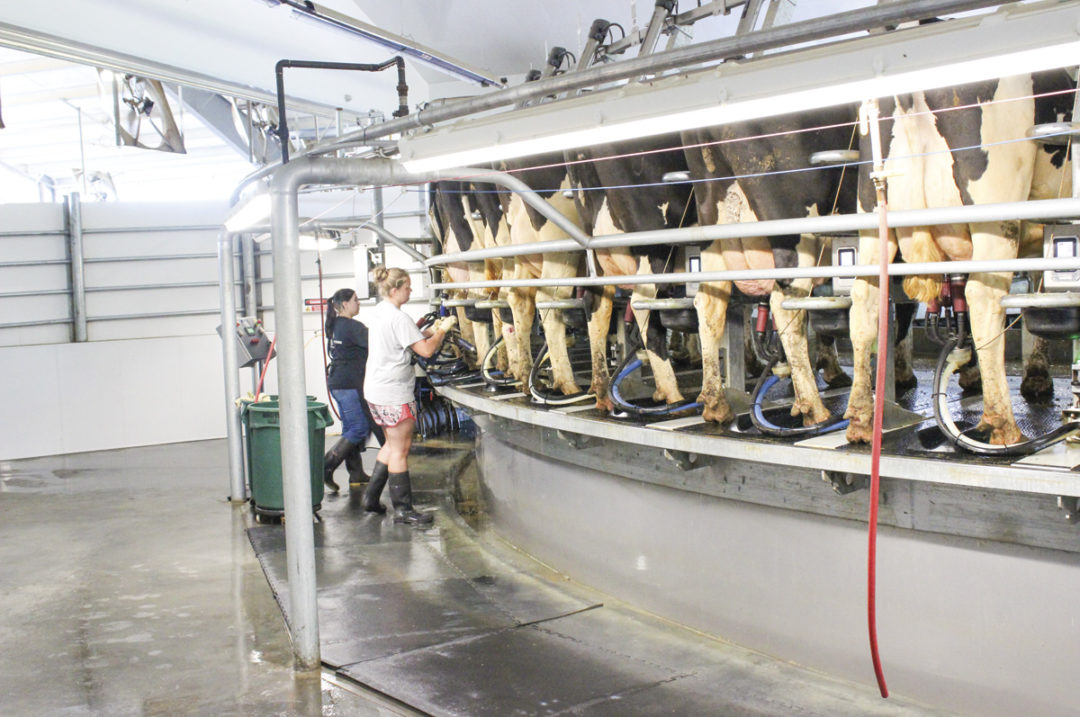As dairy farms grow and evolve, so do their milking parlor and technology needs. While many farms start with basic systems, as herds grow and milk production increases, the time may come when upgrades and retrofits are necessary.
Breathing new life into an older-style dairy
If an older-style milking parlor has become worn over time, or if a growing herd size has increased pressure on the system, a platform retrofit can breathe new life into a dairy. An outdated, underperforming milking parlor can result in expensive maintenance costs and lower production outputs, while a platform retrofit can increase reliability, efficiency and productivity.
While platforms have traditionally been constructed from concrete, and still appeal to many farmers, the latest composite platform technology is constructed to be structurally stronger, lighter and longer-lasting. As well as eliminating both slick and exposed aggregate flooring issues that arise from platform usage over the years, they are also impervious to chemicals, acidic manure and waste.
This advancement in platform technology can be configured in a range of sizes to suit all herds, allowing farmers to make the most of their square footage. The technology has become one of the preferred options worldwide for most retrofit and new builds over the past 12 years.
A new modern platform provides a safe, comfortable and practical work environment for operators while maximizing cow flow and reducing the incidence of animal injuries and related health costs. A platform retrofit is a cost-effective alternative to constructing an entirely new milking parlor and also enables farmers to upgrade to the latest in automation technologies to further increase their efficiencies.
Key considerations for upgrading or retrofitting a milking parlor
When upgrading or retrofitting a milking parlor, there are several considerations that must be taken into account to ensure optimal performance and efficiency.
One of the first considerations is the physical structure of the existing parlor. This includes factors such as the layout, size and accessibility of the facility. It is essential to renovate and retrofit the parlor to ensure that it is safe, hygienic and meets the needs of the herd size.
Another crucial consideration is the milking equipment itself. Modern milking systems are designed to improve milk quality, reduce labor costs and increase milking efficiency. Upgrading to more advanced automated milking equipment can help reduce stress on the cows and improve milk output. Regular maintenance is also important to prevent breakdowns and ensure the milking process runs smoothly.
Often, one of the most crucial and overlooked aspects on every retrofit or new build is maximizing cow flow to increase efficiencies. A few simple gate or fence changes, or moving a wall or alleyway, can improve cow flow immensely. It is important to keep in mind avoiding sharp 90-degree turn areas, narrow alley lanes and blocking ventilation provisions to establish the path of least resistance for animals to get to the parlor. Likewise, on their return to access water, feed and bedding, it is important to ensure they can return with the least amount of stress and effort possible.
Improving cow comfort is another important factor to consider when upgrading or retrofitting a milking parlor. Cows that are comfortable and relaxed during milking produce higher-quality milk and are less prone to stress-related health issues. This can be achieved by including rubber flooring and providing comfortable and spacious milking stalls.
In addition to the physical upgrades and improvements, implementing correct milking procedures is essential to ensure optimal milk quality and cow health. This includes training staff in the proper techniques for milking, monitoring cow health and behavior, and implementing strict hygiene protocols to prevent the spread of disease. Investing in staff training is also important to ensure that all staff members are knowledgeable and competent in performing their duties, which can help to improve the overall efficiency of the milking process.
A five-step process for a successful retrofit
The milking parlor retrofit process takes into account a farm’s management plan and future requirements:
- Evaluate: During this stage, the current infrastructure is evaluated to determine what can be retained and what needs to be upgraded or retrofitted. By finding ways to re-use current utilities and drain lines, and utilizing an existing milkhouse or equipment room that is still in good working condition, significant financial savings can be made.
- Measure: The milking parlor is measured to determine how the existing infrastructure can be best utilized and if a larger platform could be retrofitted for improved efficiency.
- Propose: Based on the evaluation and measurements, the best milking and automation technology is determined and a project design is proposed along with a timeline for installation.
- Manufacture: The platform and automation technology are manufactured to the highest standards according to the project design specifications.
- Install: The final stage involves the installation of the retrofit by a specialist team to ensure the project is completed on time and on spec.
Customize the farm's solution for long-term success
As milk production and demand continue to increase, staying up-to-date with the latest technology and trends, ensuring competitiveness and profitability in an ever-evolving industry, becomes crucial. Upgrading and retrofitting the farm not only offers various benefits, but it also allows for customization to meet the farm's specific needs long-term.
There are many choices when it comes to technology and automation levels for your operation, both now and in the future. By upgrading and retrofitting your milking parlor, you can proactively position yourself for long-term success and stay ahead of the curve.







